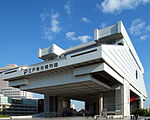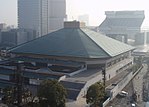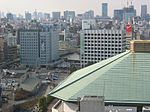Bombing of Tokyo (10 March 1945)

On the night of 9/10 March 1945, the United States Army Air Forces (USAAF) conducted a devastating firebombing raid on Tokyo, the Japanese capital city. This attack was code-named Operation Meetinghouse by the USAAF and is known as the Great Tokyo Air Raid in Japan. Bombs dropped from 279 Boeing B-29 Superfortress heavy bombers burned out much of eastern Tokyo. More than 90,000 and possibly over 100,000 Japanese people were killed, mostly civilians, and one million were left homeless, making it the most destructive single air attack in human history. The Japanese air and civil defenses proved largely inadequate; 14 American aircraft and 96 airmen were lost. The attack on Tokyo was an intensification of the air raids on Japan which had begun in June 1944. Prior to this operation, the USAAF had focused on a precision bombing campaign against Japanese industrial facilities. These attacks were generally unsuccessful, which contributed to the decision to shift to firebombing. The operation during the early hours of 10 March was the first major firebombing raid against a Japanese city, and the USAAF units employed significantly different tactics from those used in precision raids, including bombing by night with the aircraft flying at low altitudes. The extensive destruction caused by the raid led to these tactics becoming standard for the USAAF's B-29s until the end of the war. There has been a long-running debate over the morality of the 10 March firebombing of Tokyo. The raid is often cited as a key example in criticism of the Allies' strategic bombing campaigns, with many historians and commentators arguing that it was not acceptable for the USAAF to deliberately target civilians, and other historians stating that the USAAF had no choice but to change to area bombing tactics given that the precision bombing campaign had failed. It is generally acknowledged that the tactics used against Tokyo and in similar subsequent raids were militarily successful. The attack is commemorated at two official memorials, several neighborhood memorials, and a privately run museum.
Excerpt from the Wikipedia article Bombing of Tokyo (10 March 1945) (License: CC BY-SA 3.0, Authors, Images).Bombing of Tokyo (10 March 1945)
Kiyosumi-Dori, Sumida
Geographical coordinates (GPS) Address Nearby Places Show on map
Geographical coordinates (GPS)
| Latitude | Longitude |
|---|---|
| N 35.699444444444 ° | E 139.79638888889 ° |
Address
東京空襲犠牲者を追悼し平和を記念する碑
Kiyosumi-Dori
130-8644 Sumida
Japan
Open on Google Maps









